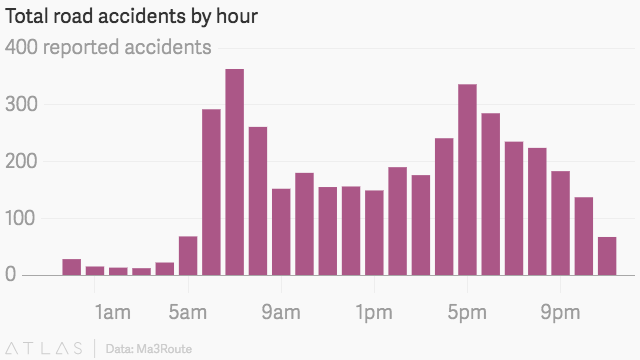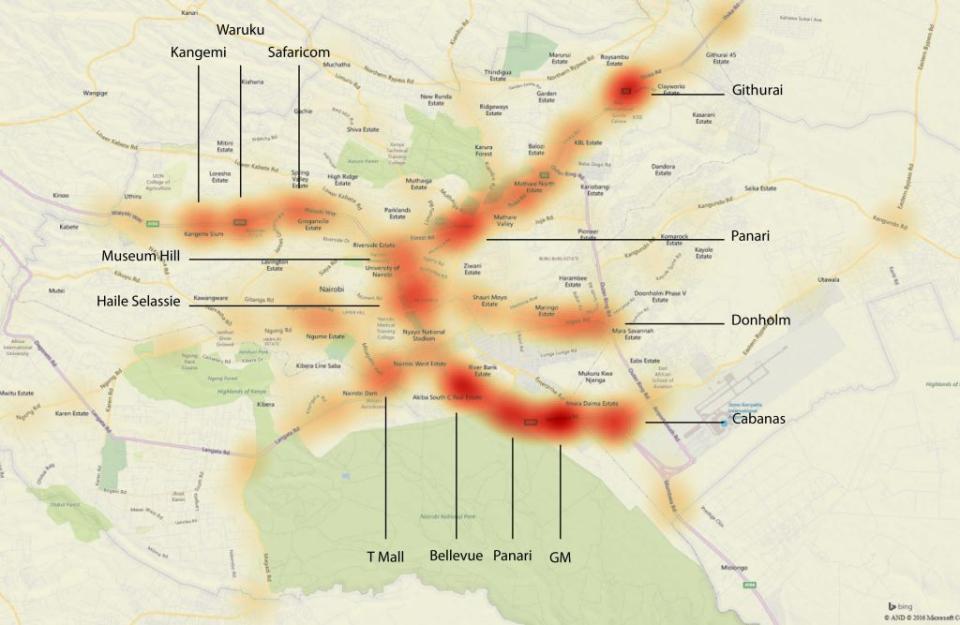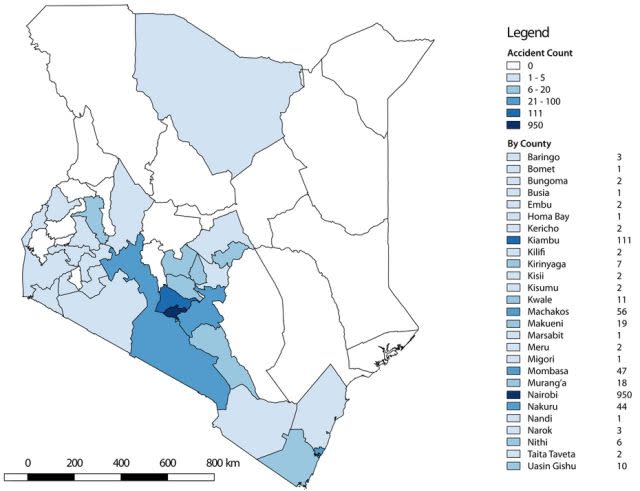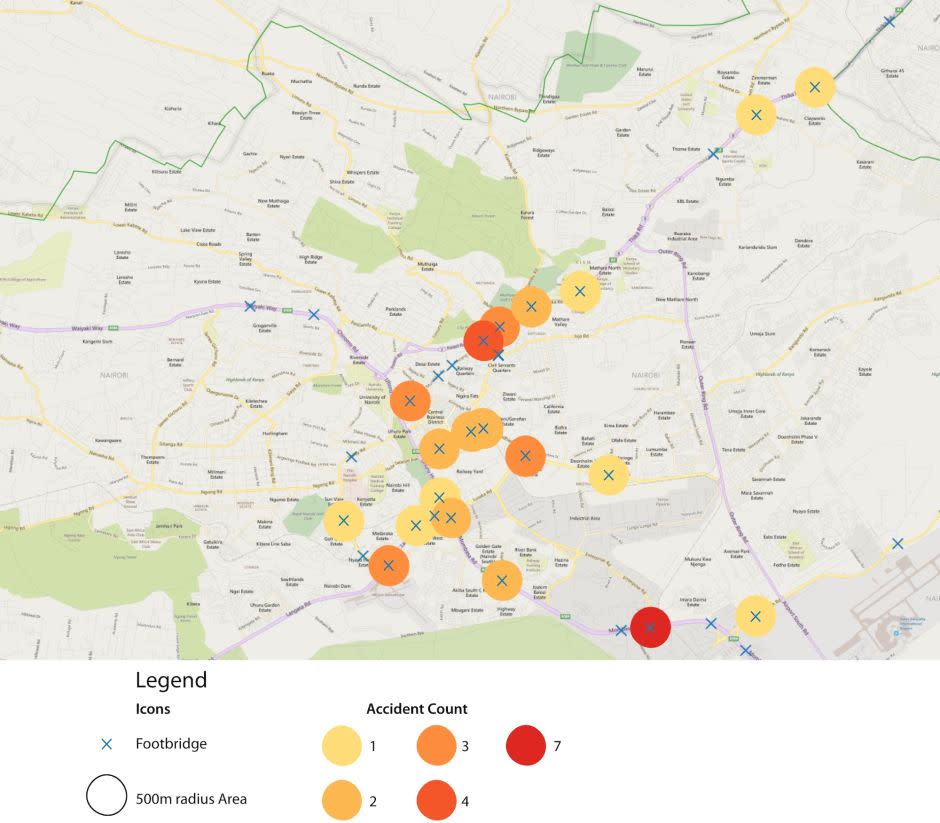Kenya is one of the most dangerous places to be a pedestrian—better data could change that

The most dangerous time to walk on Nairobi’s streets is on a Friday, around 7am, particularly in the southeast, along one of the city’s main arteries, Mombasa Road. That’s according to new analysis based on data collected by Ma3Route, a Nairobi-based startup that crowdsources traffic and accident reports.
Kenya, where road fatalities have increased fivefold over the last 30 years, is one of the deadliest countries in the world for pedestrians. Almost half of the 3,000 people who die each year in car related accidents in Kenya are pedestrians, compared to 39% for all of Africa—which is already the highest of any region in the world, according to a 2015 report on global road safety by the World Health Organization.
With this in mind, Ma3Route collected accident reports from the 500,000 users that use its platform over the course of six months last year. “The goal of this project was the data,” says Elizabeth Resor, an independent researcher in city planning who has partnered with Ma3Route as the head of the Nairobi Accident Map project.
“For Ma3Route, it was a pilot to see how their raw data could become a policy tool and thus a product of its own. For me, it was to test the hypothesis that crowdsourcing could produce a verifiable, useable dataset for planners, government, NGOS, etc.”
Resor’s analysis of over 7,000 accident reports found that car accidents in the capital were most likely to happen during peak morning and afternoon traffic—around 7am and again at 5pm—and on Fridays and Saturdays.

Despite the notorious reputation of Nairobi’s mini buses, or matatus, personal cars were involved in the most accidents. And most accident reports were reported on the outskirts of the city.

Nairobi registered the most accidents, followed by Kiambu County, where many residents commute to Nairobi from, and Machakos, a county that has been held up as a model for devolution—the process of putting more resources and authority into the hands of local governments.

Resor’s most surprising find is that almost half of accidents involving a pedestrian took place within 500 meters of a footbridge, a sign that just providing walkways isn’t enough. Pedestrians often don’t feel safe using footbridges, Resor points out. “My recommendation would be to focus on ways to protect pedestrians that can be combined with footbridges, like raised crosswalks, or to try to improve the safety of footbridges with better maintenance, and lighting,” she says.

Sign up for the Quartz Africa Weekly Brief — the most important and interesting news from across the continent, in your inbox.

Sign up for the Quartz Daily Brief, our free daily newsletter with the world’s most important and interesting news.
More stories from Quartz:

 Yahoo Finance
Yahoo Finance 